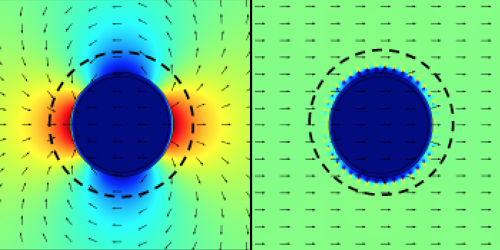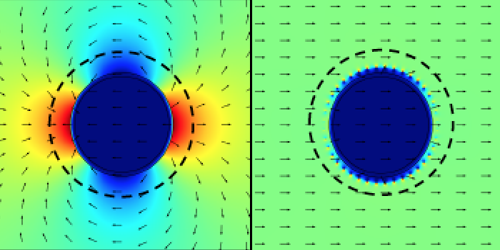Magnetic Cloak Without Superconductors
Electromagnetic cloaks can shield objects from electromagnetic radiation, while rendering them virtually invisible. While cloaks for visible electromagnetic waves have proven difficult to realize, researchers have demonstrated schemes that work on magnetic fields. Such magnetic cloaks typically use superconducting materials, which must be cooled to cryogenic temperatures—a great drawback for practical applications. Now, Sailing He, Yungui Ma, and Wei Jiang of Zhejiang University, China, have built a room-temperature cloak that does not employ superconductors. Such a cloak could be useful in shielding sensitive devices from external magnetic fields.
A magnetic cloak should perform two basic functions: block out all magnetic fields and eliminate any magnetic-field distortions introduced by the cloaked object. Previously, researchers built cloaks out of superconductors because these materials repel magnetic fields via the so-called Meissner effect. They layered the superconductor with another material that creates a magnetic field compensating for the distortions.
The authors’ cloak consists of a hollow cylinder—12 cm in length and 4 cm in diameter—made of several foils of a high-magnetic-permeability material. Several copper wires run along the cylinder’s length. When currents pass through the wires, the cylinder and wires together shield the interior of the cylinder from external magnetic fields, mimicking the Meissner effect. The currents, in turn, can be tuned to generate the compensating field outside of the cloak. Experiments demonstrated that the device works at room temperature for static magnetic fields about 20 times stronger than Earth’s magnetic field. The current tunability gives the device an important advantage: the currents can be adjusted to optimize cloaking under different external magnetic-field or environmental conditions.
This research is published in Physical Review Applied.
Sophia Chen is a freelance science writer based in Tucson, Arizona.





